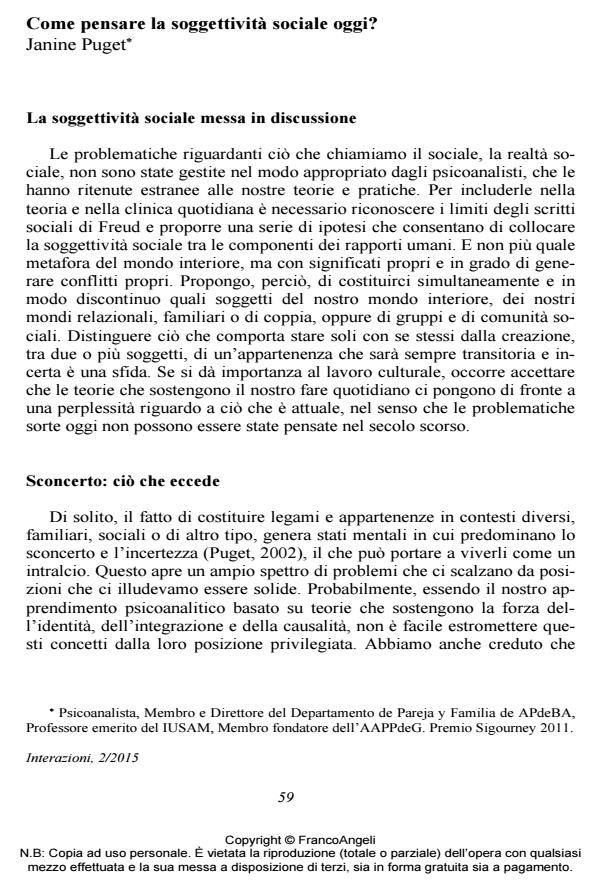How can we think about social subjectivity today?
Journal title INTERAZIONI
Author/s Janine Puget
Publishing Year 2016 Issue 2015/2
Language Italian Pages 13 P. 59-71 File size 60 KB
DOI 10.3280/INT2015-002005
DOI is like a bar code for intellectual property: to have more infomation
click here
Below, you can see the article first page
If you want to buy this article in PDF format, you can do it, following the instructions to buy download credits

FrancoAngeli is member of Publishers International Linking Association, Inc (PILA), a not-for-profit association which run the CrossRef service enabling links to and from online scholarly content.
The author argues that social subjectivity has not been properly considered in psychoanalysis and that therefore new hypotheses are needed for it. She then suggests those concerning the difference between being with oneself, being two or more separated by a space that cannot be reduced to identification processes, and belonging to a social entity. To live in a space is always temporary, even if what one is unconsciously looking for is a strong belonging. This approach forces us to considerer bafflement and uncertainty as necessary conditions for life with two or more others. Clinical vignettes illustrate these questions.
Keywords: Uncertainty, bafflement, effect of present, discontinuity, social subjectivity
- Contemporaneità del pensiero di Janine Puget Silvia Corbella, in GRUPPI 2/2021 pp.171
DOI: 10.3280/gruoa2-2020oa12589 - Gli effetti del presente Maria Gabriela Sbiglio, Lara Giambalvo, Alessandra Verri, Barbara Bianchini, Velia Bianchi Ranci, in GRUPPI 2/2021 pp.178
DOI: 10.3280/gruoa2-2020oa12590
Janine Puget, Come pensare la soggettività sociale oggi? in "INTERAZIONI" 2/2015, pp 59-71, DOI: 10.3280/INT2015-002005